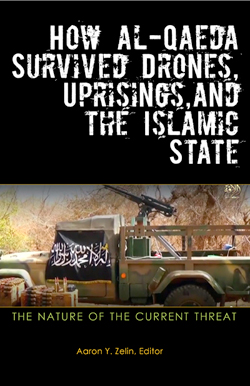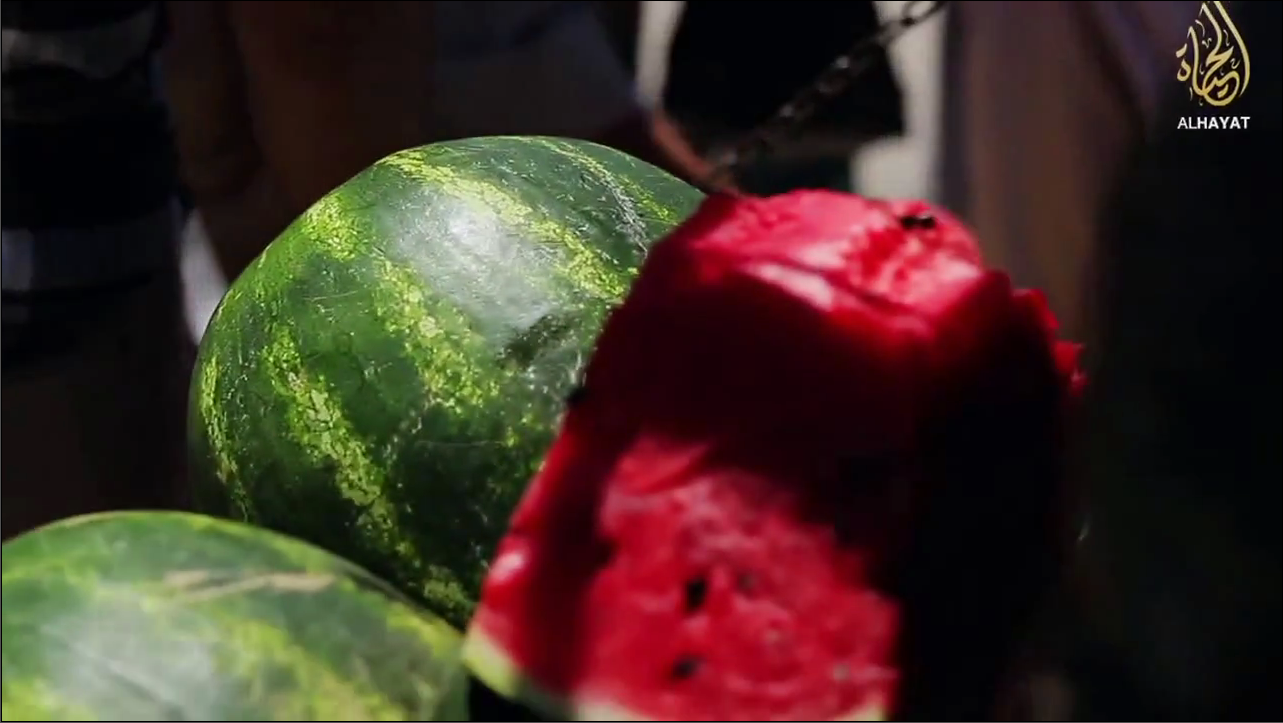Monday June 10:
The Non-Jihadi Foreign Fighters: Western Right-Wing and Left-Wing Extremists in Syria – Ariel Koch, Terrorism and Political Violence: https://bit.ly/2JSgSG1
“Partisan Politics Was Making People Angry”: The Rise and Fall of Political Salafism in Kenya – Sebastian Elischer, The Journal of the Middle East and Africa: https://bit.ly/2O62bEA
Exploiting Borders in the Sahel: The Islamic State in the Greater Sahara – Pauline Le Roux, Africa Center for Strategic Studies: https://bit.ly/304Mui3
Tuesday June 11:
When Extremists Become Violent: Examining the Association Between Social Control, Social Learning, and Engagement in Violent Extremism – Michael H. Becker, Studies in Conflict & Terrorism: https://bit.ly/2JRjZxU
Who is More Violent in Extremist Groups? A Comparison of Leaders and Followers – Katarzyna Jasko and Gary LaFree: https://bit.ly/2Lb1vsE
Wednesday June 12:
Updated review and developments in jihadist radicalisation in Switzerland – updated version of an exploratory study on prevention and interventionn – Miryam Eser Davolio, Mallory Schneuwly Purdie, Fabien Merz, Johannes Saal, and Ayesha Rether, Zurich Universities of Applied Sciences and Arts: https://bit.ly/2GlcYob
Thursday June 13:
Playing dirty to survive: the vulnerability of civilian targets within U.S. military aid recipient states – Amira Jadoon, Small Wars & Insurgencies: https://bit.ly/2Gm4mxl
Territoriality of radical Islam: comparative analysis of jihadist groups’ approach to territory – Bohumil Doboš, Martin Riegl, and Stig Jarle Hansen, Small Wars & Insurgencies: https://bit.ly/2LyrcX2
Organized insurgency, lethality, and target selection: Abu Sayyaf Group and Jemaah Islamiyah – Nori Katagiri, Small Wars & Insurgencies: https://bit.ly/2Z8aW28
Friday June 14:
Women in Islamic State Propaganda – Europol: https://bit.ly/2FcMwMH
Monday June 17:
How Do Terrorist Organizations Make Money? Terrorist Funding and Innovation in the Case of al-Shabaab – Ido Levy and Abdi Yusuf, Studies in Conflict & Terrorism: https://bit.ly/2O7H9Wg
Tuesday June 18:
Primary Data and Individual Worldviews: Walking through Research on Terrorist Media Choices – Donald Holbrook, Resolve Network: https://bit.ly/2JHNfsb
Religious Institutionalism: A Domestic Explanation for External Support of Rebel Groups – Brandon Ives, International Interactions: https://bit.ly/2SsgUbu
Motivations for Jihad and Cognitive Dissonance – A Qualitative Analysis of Former Swedish Jihadists – Marco Nilsson, Studies in Conflict & Terrorism: https://bit.ly/31HUuao
Wednesday June 19:
Introducing Extended Data on Terrorist Groups (EDTG), 1970 to 2016 – Dongfang Hou, Khusrav Gaibulloev, and Todd Sandler, Journal of Conflict Resolution: https://bit.ly/2O7I0pW
Thursday June 20:
Made-to-measure Qur’anic quotations: the incomplete verses of al-Qaeda in the Islamic Maghreb – Sergio Altuna Galán, Real Instituto Elcano: https://bit.ly/2JRd1sQ
Regulating terrorist content on social media: automation and the rule of law Stuart Macdonald, Sara Giro Correia, and Amy-Louise Watkin, International Journal of Law in Context: https://bit.ly/2JYIwB0
Friday June 21:
Opposition to Abu Bakr al-Baghdadi: ‘The Hollow Organization’ – Aymenn Jawad Al-Tamimi: https://bit.ly/2XVdKTy
Tuesday June 25:
What’s on the Terrorists’ Bookshelves? – Donald Holbrook, Europol: https://bit.ly/2GlKhY9
Black Ops: Islamic State and Innovation in Irregular Warfare Craig Whiteside, Ian Rice, and Daniele Raineri, Studies in Conflict & Terrorism: https://bit.ly/2StCZGM
Call of Duty Jihad: How the Video Game Motif has Migrated Downstream from Islamic State Propaganda Videos – Cori E. Dauber, Mark D. Robinson, Jovan J. Baslious, and Austin G. Blair, Perspectives on Terrorism: https://bit.ly/2YYSGbm
The Utility of Disabled Fighters in the Islamic State – Chelsea Daymon, Perspectives on Terrorism: https://bit.ly/32F2yZV
Behind the Veil: Women in Jihad after the Caliphate – Lydia Khalil, Lowy Institute: https://bit.ly/31VJ7vD
Wednesday June 26:
Interview with Syrian war veteran Khalid Shishani – Joanna Paraszczuk, From Chechnya to Syria: https://bit.ly/2xUK1L9
The Jurisprudence Trace Behind the DAESH Trench: Theoretical Basis of Islamic Fundamentalism Focusing on Kurdistan Province of Iran – Farhad Bayani, Asian Journal of Middle Eastern and Islamic Studies: https://bit.ly/2M34C8o
Communication (un)savviness and the failure of terrorism: a case of Pakistani terrorist organizations – Muhammad Feyyaz, Dynamics of Asymmetric Conflict: https://bit.ly/2xWCBa9
Thursday June 27:
Women and Al-Shabaab’s Insurgency – International Crisis Group: https://bit.ly/2xYVyJf
Rethinking the repression-dissent nexus: assessing Egypt’s Muslim Brotherhood’s response to repression since the coup of 2013 – Khalil al-Anani, Democratization: https://bit.ly/2GyKwzl
ISIS’s Second Comeback: Assessing the Next ISIS Insurgency – Jennifer Cafarella, Brandon Wallace, and Jason Zhou, Institute for the Study of War: https://bit.ly/2J2a1KL
The Philippines: Militancy and the New Bangsamoro – International Crisis Group: https://bit.ly/30K6cA0
From religious performances to martial themes – Discourses of Shi’a musical eulogies, war and politics in Iran – Soudeh Ghaffari, Journal of Language and Politics: https://bit.ly/2PFOfAn
Friday June 28:
Researching Violent Extremism: The State of Play – J.M. Berger, Resolve Network: https://bit.ly/32PpNRg
A Study of Outlinks Contained in Tweets Mentioning ‘Rumiyah’ – Stuart Macdonald, Daniel Grinnell, Anina Kinzel, and Nuria Lorenzo-Dus, RUSI: https://bit.ly/2YvticU
Sunday June 30:
How Content Removal Might Help Terrorists – Joe Whittaker, Lawfare: https://bit.ly/2LxcUFM
Structure of HTS’ Popular Resistance Companies – Caleb Weiss, The Line of Steel: https://bit.ly/2Y5GDYv
Wednesday July 3:
Surviving Boko Haram: why children under five matter – Uyo Yenwong-Fai, Institute for Security Studies: https://bit.ly/2LwwkLb
Tunisia Keeps Calm and Carries On After Latest Terrorist Attack – Aaron Y. Zelin, Washington Institute for Near East Policy: https://bit.ly/2xXzRJB
Thursday July 4:
Shedding Light on Terrorist and Extremist Content Removal – Isabelle van der Vegt, Paul Gill, Stuart Macdonald, and Bennett Kleinberg, RUSI: https://bit.ly/2Zcw8ni
Friday July 5:
Terrorist assassinations and societal unrest in Africa: a research brief – Laura N. Bell, Dynamics of Asymmetric Conflict: https://bit.ly/2Y6XWIp
Considering the military-media nexus from the perspective of competing groups: the case of ISIS and AQAP – Carol Winkler, Kareem El-Damanhoury, Aaron Dicker, Yennhi Luu, Wojciech Kaczkowski, and Nagham El-Karhili, Dynamics of Asymmetric Conflict: https://bit.ly/2Z2qlAX
Saturday July 6:
Measuring Tactical Innovation in Terrorist Attacks Article – Michael K. Logan, Gina Scott Ligon, and Douglas C. Derrick, The Journal of Creative Behavior: https://bit.ly/2JF4oCB
Monday July 8:
Another Form of American Exceptionalism? A Comparative Analysis of Terrorism Sting Operations in the US and Abroad – Jesse J. Norris, Terrorism and Political Violence: https://bit.ly/30MA0Ma
The Algerian State, Islamist Insurgents, and Civilians Caught in Double Jeopardy by the Violence of the Civil War of the 1990s – C. R. Pennell, Terrorism and Political Violence: https://bit.ly/2LvLZdB
Poverty and Divine Rewards: The Electoral Advantage of Islamist Political Parties – Sharan Grewal, Amaney A. Jamal, Tarek Masoud, and Elizabeth R. Nugent, American Journal of Political Science: https://bit.ly/2JIV4xM
Tuesday July 9:
Nigeria’s Shi’a Islamic Movement and Evolving Islamist Threat Landscape: Old, New and Future Generators of Radicalization – Simon Gray & Ibikunle Adeakin, African Security: https://bit.ly/30NNjMK
A Man, A Plan, So What? The Influence of Abu Mus’ab al-Suri, Reconsidered – Phillip William Etches, Small Wars Journal: https://bit.ly/2YfuzI6
A Turn to Violence: The Escalation of Nonviolent Movements – Kirssa Cline Ryckman, Journal of Conflict Resolution: https://bit.ly/2XP2TKK
Rhetorics of Radicalism – Daniel Karell and Michael Freedman, American Sociological Review: https://bit.ly/2GjXcK2
Wednesday July 10:
Economics of terrorism in Lake Chad Basin – Malik Samuel, Institute for Security Studies: https://bit.ly/2XRHSiF
Islamic State’s quest for legitimacy: An analysis of IS media frames in Dabiq magazine – Kasun Ubayasiri, Media, War & Conflict: https://bit.ly/2JPVRf0
The Evolution of Online Violent Extremism in Indonesia and the Philippines – Nava Nuraniyah, RUSI: https://bit.ly/2M36IoM
Thursday July 11:
The Salafi-Jihadist Reaction to Hindu Nationalism – Hari Prasad, Current Trends in Islamist Ideology: https://bit.ly/2XQpFSC
Countering Violent Extremism Online: The Experiences of Informal Counter Messaging Actors – Benjamin Lee, Policy & Internet: https://bit.ly/2pibdSL
Friday July 12:
Drones, Surveillance, and Violence: Theory and Evidence from a US Drone Program – Asfandyar Mir and Dylan Moore, International Studies Quarterly: https://bit.ly/2Y8zzPs
Saturday July 13:
Of terrorism and revenue: Why foreign aid exacerbates terrorism in personalist regimes – Andrew Boutton, Conflict Management and Peace Science: https://bit.ly/2Y6zNBU
Tuesday July 16:
Suicide squad: Boko Haram’s use of the female suicide bomber – Vesna Markovic, Women & Criminal Justice: https://bit.ly/2YdWYhF
Blacklists, Market Enforcement, and the Global Regime to Combat Terrorist Financing – Julia C. Morse, International Organization: https://bit.ly/2XRJ4Tb
Wednesday July 17:
Assessing the Impact of the Global War on Terrorism on Terrorism Threats in Muslim Countries – Peter S. Henne, Terrorism and Political




